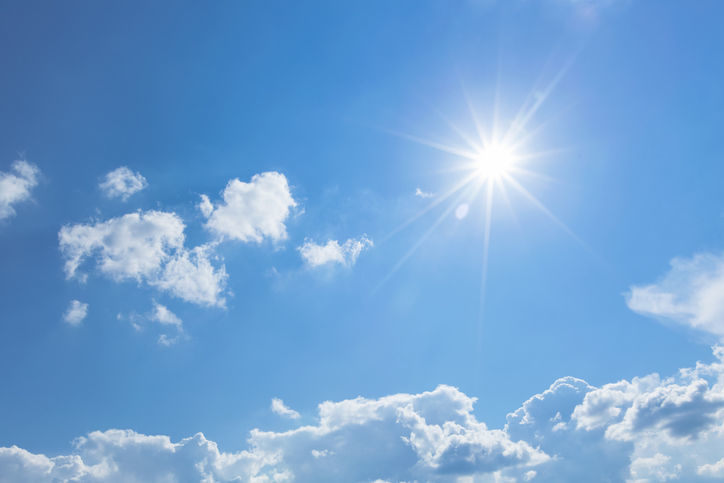We’re three months into 2021, and it’s already been a warmer-than-normal year from the East Coast to the Southwest (with the exception of a record-breaking deep freeze in Texas). So far, those warmer temperatures have led to decreased demand for natural gas heating, but as the weather warms up this summer, natural gas will be needed to cool residential buildings and other facilities. So, what other climate and weather trends will impact energy markets (and your company’s energy use) in 2021? We’re breaking them down below.
Plan for Hot, Dry Weather
2021 is expected to be warmer than normal, according to NOAA’s Climate Prediction Center (CPC). This is mainly due to the fading of La Niña conditions in the Pacific Ocean. La Niña, the periodic cooling of water in the eastern equatorial Pacific, influences weather patterns in the U.S. and elsewhere. After reaching a typical peak in late fall of 2020, La Niña is now gradually weakening. This will lead to a hot, dry summer and warmer-than-normal winter.
As far as energy markets are concerned, expect a spike in liquified natural gas (LNG) demand and higher prices as the summer progresses, with a subsequent drop as a mild fall and winter arrive. This summer will also be a chance for renewables installed during the pandemic to take the lead in producing electricity on both industrial and localized scales. That said, expect the use of renewables to increase across energy markets in 2021.
If you own or manage buildings/facilities, there are several things you can do to take control of your energy use and utility bills in the warm months ahead:
- Plan ahead for peak load days. Peaks tend to occur on particularly warm or cold days when a large portion of consumers are using energy for heating or cooling. Your peak load contribution (PLC) is generally determined by your company’s contribution to the grid’s overall peak load. It is calculated depending on how much electricity you demand when the grid is peaking and then used by utilities as indicators for how much generation they will need to keep up with demand and prevent shortages. Since you are billed for both the amount of energy you consume AND the amount of energy that needs to be available to meet your account’s demand, keeping your PLC managed is vital to limit higher electricity bills all year round.
- Make sure your HVAC systems and insulation are working properly. The heating, ventilation, and air conditioning (HVAC) system is usually one of the biggest areas of energy consumption within a facility. An HVAC system is comprised of ductwork and registers, fans and blowers, and various electrical connections. All of these can be areas where energy is lost. If your HVAC system isn’t up to scratch, you’ll quickly notice high electricity bills this summer as a result. Meanwhile, having strong insulation will allow you to keep the cold air generated by your HVAC system in your building(s) rather than losing it to air leaks.
- If your company operates in an area impacted by wildfires, 2021 could be another bad year due to the forecasted dry conditions. To alleviate your company’s energy risk, consider using more renewables and energy storage to meet your electricity needs. Energy storage is the process of storing renewable energy that is not always available in nature. It allows buildings to lower their demand from the grid during peak times when electricity becomes more expensive and keeps prices low by allowing distributors to purchase electricity during cheaper off-peak times. Energy storage also provides grid resilience and lowers your energy risk because it serves as a backup supply of energy if power generation is interrupted (e.g., by a wildfire).
Expect an Active Hurricane Season
The 2021 Atlantic hurricane season officially begins on June 1 and ends on November 30. In December 2020, Tropical Storm Risk (TSR) issued an extended range forecast for the 2021 hurricane season, predicting slightly above-normal activity with 16 named storms, 7 hurricanes, and 3 major hurricanes. (Once again, La Niña is to blame: TSR cited the expected development of a weak La Niña during the third quarter of 2021 as the main factor behind their forecast.)
Hurricanes pose a threat to energy markets, causing fluctuations in oil, natural gas, and electricity prices. The Gulf Coast accounts for 45% of U.S. oil refining capacity, 17% of oil production, and 5% of natural gas production and processing. A hurricane hitting the Gulf can potentially shut down these capabilities for days or weeks at a time. Your company can prepare for the upcoming hurricane season by having an energy management service which keeps track of natural gas prices and gives you insight into forward power pricing.
Next Steps
While it’s impossible to predict exactly how the weather and climate will impact energy markets (and your company) in 2021, we can hazard a pretty good guess. That said, it’s important to have the right tools at hand to prepare your company for what is ahead. EnergyWatch’s energy management platform, WatchWire, alerts you when peak load hours are likely to occur so you can act out your peak load management strategies and reduce your load while saving your company money. Additionally, WatchWire is vital to making your building more efficient. WatchWire can assist you with measuring your water and energy use and help you measure and verify the effectiveness of your efficiency projects (like HVAC repairs and new insulation). Finally, WatchWire can evaluate and quantify the efficacy of your energy storage projects and analyze their effectiveness once they are implemented. To learn more about WatchWire’s capabilities, download the WatchWire Fact Sheet.
Sources
https://www.weathernationtv.com/news/mild-weather-predicted-for-the-first-three-months-of-2021/#:~:text=2021%20is%20expected%20to%20start,see%20warmer%20than%20normal%20temperatures.
https://spacecoastdaily.com/2021/03/nhc-predicts-16-named-storms-for-upcoming-atlantic-hurricane-season-releases-names-for-2021/
https://weather.com/forecast/national/news/2021-03-10-summer-outlook-temperatures-united-states#:~:text=Summer%202021%20is%20expected%20to,Weather%20Company%2C%20an%20IBM%20Business.&text=Meanwhile%2C%20much%20of%20the%20East,warmer%20than%20average%20this%20summer.
 Top Sustainability Trends to Watch in 2025
Top Sustainability Trends to Watch in 2025

 Log In
Log In








